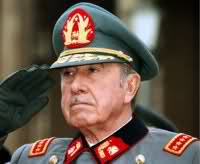Why didn’t the rest of Europe adopt the English longbow?
Eirik Ronald Fossheim
Answered Jun 14 on Quora.com
Some of them did, but they were no match for English longbowmen. Here’s the story - the short version.
Sunday, November 18, 2018
Charles had 100 Scottish archers as part of his bodyguard in 1418. In May 1419, 150 Scottish men-at-arms and 300 archers was garrisoned at Méhun-sur-Yévre. Later that year John Steward, Earl of Buchan, Constable of Scotland and son of the regent recruited 6000 men. The ratio of archers to men-at-arms was 2:1, or 4000 archers and 2000 men-at-arms, bringing the total up to 4300 archers and 2150 men-at-arms.
In 1421 a joint Scottish and French force achieved a notable victory at Baugé in Anjou. Thomas, Duke of Clarence, the brother and hire apparent of Henry V, was slain together with 1617 men-at-arms. The 4000 English archers were spread out to loot the countryside and didn't participate in the battle. After the battle Pope Martin V made his famous remark "Truly the Scots are an antidote to the English".
In 1423 this Franco-Scottish force together with Spanish and Lombard mercenaries besieged Cravant. The English and Burgundian relief force faced the Franco-Scottish force on the opposite side of the river Yonne and defeated them. The Scots lost around 2500 men, predominately to english archers with greater range than the Scottish archers.
In 1424 a second major Scottish army arrived at La Rochelle. The army consisted of 2500 men-at-arms and 4000 archers. It was led by Archibald, Earl of Douglas. United with the remnants of the Scottish forces after Cravant, this army may have totalled some 10 450 men, of which 4150 were men-at-arms and 6300 were archers.
Later that year this Scottish army met an English army at Verneuil. The Franco-Scottish force was made up of approximately 10 450 Scots, 500 Lombard mercenaries and 4000 French and Spanish men-at-arms. The English force was made up of the personal retinues of Bedford and Salisbury, 300 men each, 2000 garrison troops, 3400 indentured reinforcements from England and Wales, and the rest, the nobility of Normandy with approximately 3000 men. 2/3 of the English soldiers were archers, and maybe half the contingents from the Norman landowners. Approximately 5500 archers and 3500 men-at-arms.
The battle started with an archery duel between the Scottish and English archers on the English left. During the second phase of the battle the Lombard cavalry swept the English archers aside on the English right, disrupting their formation, but moved on to attack the baggage train in the rear rather than reform for a new charge. This meant that the English archers, even if they numbered only 2500 on the left flank, decimated or drove back the entire 3000 men strong division of Scottish archers on the opposite side during this phase of the battle. The Scottish archers are not mentioned anymore after this, whereas the English archers on the left moved on to repel the French cavalry and therefore could not have been affected much by the Scottish archers.
Waurin wrote the following "they began to shoot one against the other so murderously that it was a horror to look upon them, for they carried death to those whom they struck with full force"
The Scots had sailed to France and violated a truce between England and Scotland, which had been a condition for the release of king James I. Bedford ordered his men to give no quarter and virtually annihilated the Scottish force.
Charles VII implemented a series of reforms. In 1448 parishes had to provide archers from every 120, 80 or 50 hearths. In 1449, 4000 France-archers took part in the successful siege of Harfleur. In 1466 their numbers were increased to 16 000.


No comments:
Post a Comment